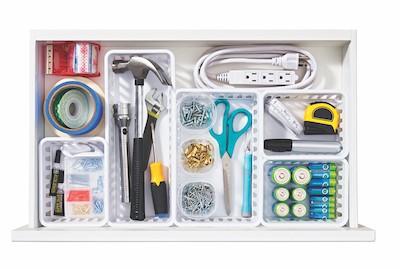Description
Studies show that decluttering improves sleep, reduces stress and increases energy and motivation. In fact, according to a study in Personality and Social Psychology Bulletin, people who described their homes as cluttered had higher levels of the stress hormone cortisol than people who said their homes were restful.
In essence, there's something peaceful about having an organized space around you. Here we share our best tips—and our favorite supplies—for getting every room organized.
Also, don't forget to check out our favorite Organizing Hacks on HSTV.com.
Off-Season Items
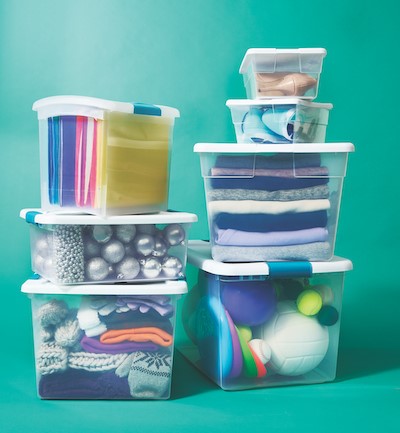
Look around for any off-season items that you don't need in the coming months. Seasonal decorations, accessories, sporting equipment, for example—store these items in Sterlite, Hefty, and other covered bins.
Papers & Receipts

Papers, receipts, greeting cards, recipes, shopping lists are all perfect for storing in lightweight bins with drawers.
Room-Specific Items

We love these multi-purpose baskets for storing cleaning supplies, magazines & books, laundry items, and extra towels. It's pretty handy that they're portable, too.
Kitchen Containers
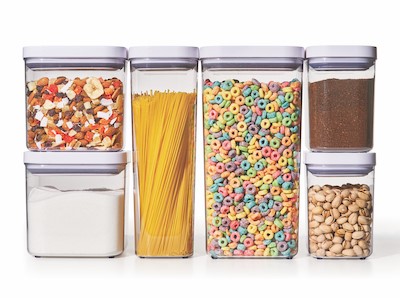
Not only do they help quickly organize the pantry, these OXO canisters also keep foods fresher than partially opened bags and boxes. Bonus points for having different, stackable sizes.
Containing the Lids

So here's what to do about those lids: Clear out the drawer and clean it. Then stack like sizes, and use the lids as dividers. Finally, snap lids on the smallest containers.
3M Command Hooks
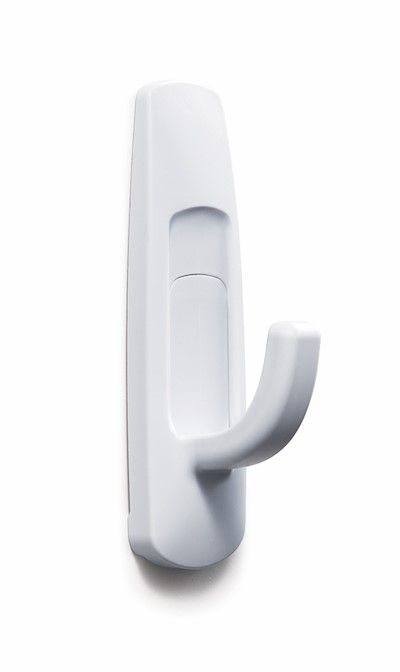
Let us count the ways we love these hooks:
1. Attach to inside of cabinet doors to hang brushes, cloths and other cleaning supplies.
2. Attach to shower wall to hold squeegee, scrubber or razor. For items without a hole, attach a binder clip to hang on the hook.
3. Hang in closet for belts, necklaces or scarves.
4. Attach heavy-duty hooks to cabinet interior to hold lightweight wire baskets. Stash lightweight items in the baskets, such as kitchen sponges or toilet paper.
5. Fasten to a food canister; hang a scoop.Cosmetics
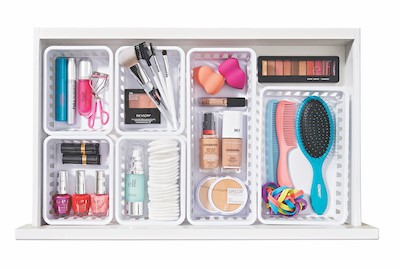
Here's our advice for cosmetics situation: Fit according to your products. Put combs, brushes and hair bands in one basket and use separate bins for makeup according to type: foundation, concealer and facial sponges in one, brushes and powdered makeup in another, nail polishes and lipsticks in yet another.
Junk Drawer
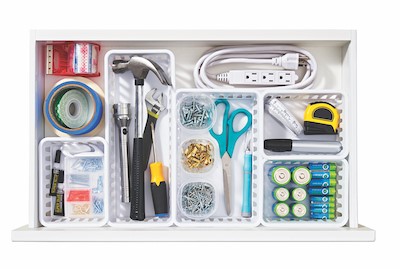
You know the one. Unjumble a junk drawer of household hardware and utility items. In designated bins, electric cords or chargers, scissors, batteries, often used tools, picture hanging supplies, tapes and glue are ready the moment they’re needed. Tuck odd-shape sizes into open nooks.
Kids Desk Drawer

Separate schoolwork and art supplies according to size and shape in bins for crayons, markers, paint boxes, brushes, glue and glue sticks, paper and kid-safe scissors.
Kitchen Utensils

Divvy up cooking tools. Store oblong spatulas, tongs, skewers and whisks in long bins, stubby items in square ones. Use tiny bins for tea balls, corn cob holders or bag clips.
Bathroom Storage
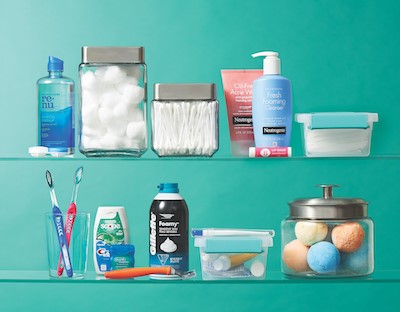
1. Store cotton balls, swabs and similar items in closed glass containers for visual appeal and cleanliness.
2. Put other frequently used items—hairstyling tools, lotions, makeup—in upper vanity or cabinet drawers, within easy reach when hands and face may be wet.
3. Pour shampoo, conditioner and liquid soap in dispenser bottles, which look cleaner and more attractive than the bulky containers products come in.
4. Transfer facial cleansing wipes from original package to a covered container to keep towelettes moist.
5. Store a squeegee, shower spray, disinfectant wipes and other bathroom cleaning supplies in a bin in an under-sink cabinet.
6. Hang an over-the-door hook to hold a robe, an extra towel or a garment bag for towels and washcloths ready to be laundered.The Fridge

From top to bottom:
1.The top two shelves maintain consistent temperature. Store ready-to-eat foods, such as leftovers, yogurt, hummus and drinks, plus fresh eggs (in their original carton) and snacks such as cut fruits and veggies. Tip: Also store Hy-Vee Short Cuts fresh produce in original covered containers in this area.
2. Middle and lower shelves tend to be colder, especially toward the back. Keep perishables like milk, cheese and other dairy products in this area. Store raw meats, fish and poultry in covered containers or sealed plastic bags to avoid drips. Also store prepped lunches (covered).
3. Door compartments are subject to temperature fluctuations due to opening and closing the door. Hold condiments here—ketchup, mustard, vinaigrettes, soy sauce, jams and jellies—which typically have longer shelf lives than other perishables. Also store butter and pasteurized orange juice.
4. Crisper drawers have humidity controls for fresh produce. Adjust to high humidity for wilting veggies (lettuce, broccoli, celery and carrots) and low for fruits and thin-skinned vegetables like bell peppers, cucumbers and zucchini.For more ideas on cleaning, check out How to Clean the Bacteria Hotspots in Your Home.
